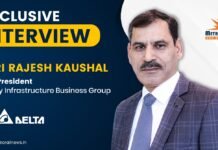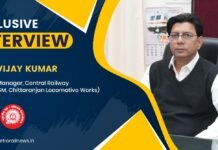Metro Rail News interviewed Mr.Atul Khanna, Director and Founder of Tooltech Global Engineering Pvt.Ltd, to discuss Tooltech’s journey, expertise and vision to design Rolling Stock for world markets from India. He highlighted the need for India to build a realisable ambition, advocating for policy changes in procurement and tendering. Here are the edited excerpts:
1. Tooltech has a strong legacy of 25 years in engineering. Can you briefly introduce Tooltech’s journey and its core expertise?
I began my journey as a startup manufacturer of carbide-cutting tools.I had the dream to build German quality products at an Indian price and export. To cut a long, earlier painful but super exciting story short—we succeeded. Today, that unit is in the region of a thousand crores, though not in my hands, with strong exports, based on the foundations we built. Sadly, our German partner got sold internationally.
I retained The design department . I didn’t then think beyond tools, services were getting big, engineering R&D was nascent, Europe as a market was nearly non-existent for India. In all this, I had built experience. I said, if we can manufacture to European standards, we can design too. So, we entered engineering services and named ourselves, Tooltech. As a five-person company with no experience in car engineering, we won the BMW account due to our familiarity with German engineering. Others followed. Thus began our entry into mobility engineering. We then moved focus to public transportation with a mission to help the Indian RS product modernise and be exported. A Rolling Stock Revolution has long come. Our efforts to put India in the game, with first global level design engineering has been long, arduous and is continuing. Manufactured export from India needs to expand, our children need jobs and Rolling Stock is an easy pick which offers humongous possibilities. We have a great railway but not great products.
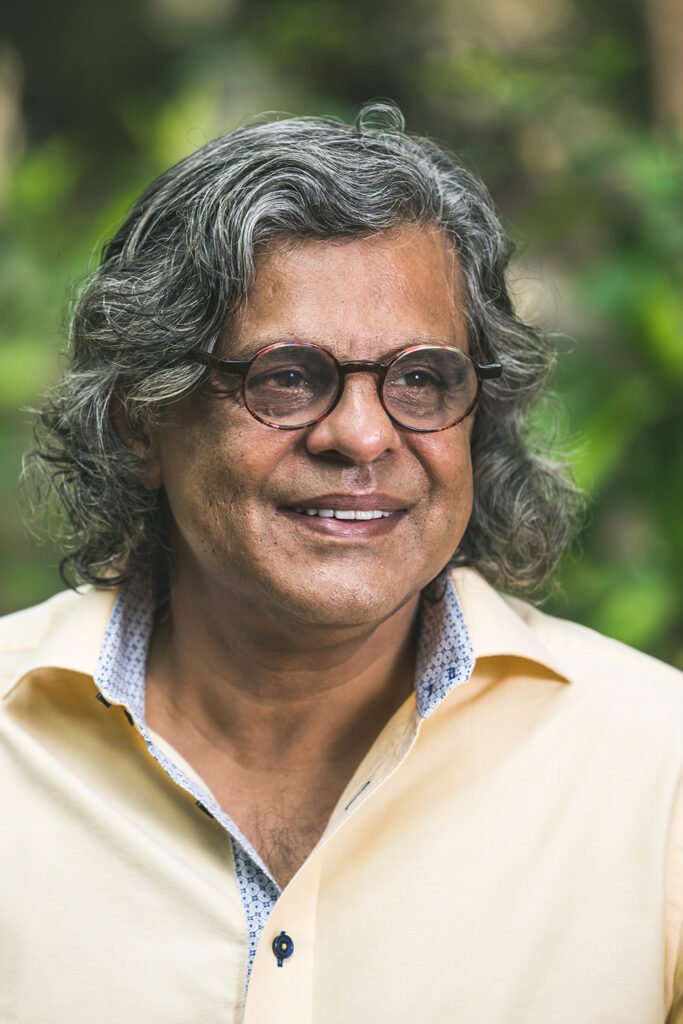
2. You have led Tooltech in executing over 2,300 transportation engineering projects globally. How has the company evolved over the years?
Nonstop ups in the first decade, then, like Europe, volatile. The big question they ask in Europe is, “What new can you do?” as opposed to in India, “What old have you done?” Such a mindset, to wait for someone to offer you precedence is exact opposite of how they build their Industry abroad. India will not create the jobs needed, at the speed needed, If we Indians can’t reference our own public expenditure. Instead, offering it mostly to foreign owned firms, who may employ Indians but keep the reference to themselves for world markets. In product design, if the core knowhow resides or is developed abroad, then only contract manufacturing is going on. If we don’t use our fantastic legacy and infrastructure to build knowhow, design depth, value added, then we will not add quality jobs and the wealth to create new jobs. Besides condemning our bright and young towards being assistants. All for what? A file that looks safe, over, a country that can be safer.
The world has developed more discerning tools for selection and building innovation. Somehow in India, those who pass exams, whose entrance tests—I would fail—are unable to do so. The Government policies and spending are there. It is in the manner of execution that we lose the full potential. Our own story has been like many others. Success overseas, failure to change the paradigm in India. It will remain my life long effort. It has gone beyond being a business goal.
3. Tooltech is global in rolling stock know-how. What is your vision for the company’s role in modernizing India’s railways?
We do this in collaboration with our German partner, Hoermann, with whom we share a strong, seamless delivery relationship. In Europe and Rest of World, they buy from know-how provider. In Indian public sector, we buy from OEMs. When I started working, China and India were nearly equal in Rolling Stock. Today, India’s rolling stock (RS) share is less than 1% globally—if that—while China holds over 50%. You could say that India’s railway engineering leadership has over decades, acted not with commission but with deliberate omission, in offering no competition to China.
I have no kinder way to say this. We want to play our role to change this. I am frequently asked abroad: Why is India sleeping? Not everyone who buys from China does so willingly. There is admiration for India, respect for Indians and a genuine need for diversified sources—only, there is no product being created to meet this demand.
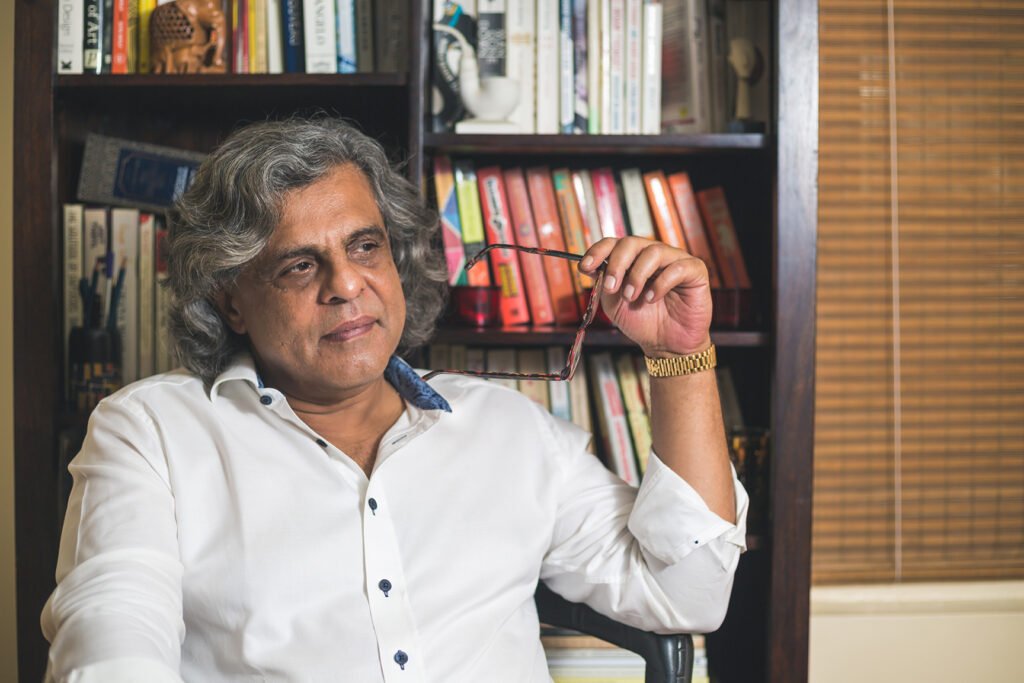
4. What unique advantages does Tooltech bring to the table compared to traditional OEMs and system providers?
First, Tooltech starts with 50% know-how local content and builds local engineering talent that can advance further. Now with new products coming, all vendors are buying from design firms, but, for now from foreign firms. Secondly, rolling stock is a visible barometer of a country’s technical prowess. Our trains are undermining the perception of Indian quality, despite India’s enormous talent. People see the source of a product, not where it is fabricated, so transplant wouldn’t help, unless the foreign OEM itself finds it conducive to export. But those volumes will remain small compared to self-exports.
No OEM has ever built another OEM, nor given its best technology. It’s too much work. An international buyer will rarely go to buy from a transplant factory. With small exceptions, buyers usually prefer to go to the original.
Thirdly, the accumulated experience of operations, which should be reflected in the product, is rarely present in a transplant.
Lastly, if you are not the original designer, you cannot rapidly industrialise production or adequately support an international buyer. These advantages we forsake. There is a reason why, globally, nations create their own products, export them, and generate wealth far beyond their domestic market.
5. Globally, system integrators play a crucial role in rolling stock development. Why has Indian Railways been slow to adopt this model?
Fifteen years ago, I was told, “You are ahead of the curve” and I still hear the same today. This reflects a fundamental issue, officers in power do not trust fellow officers to execute quality projects or are unwilling to take responsibility.
It is unfortunate, because every few years, someone does make well-researched recommendations that acknowledge this need for change. There is ample talent around. Yet, decisions are either cancelled or indefinitely delayed. The best progress we have achieved in the nth attempt for a small transformational project is 29 positive approvals, but never the final one. The mindset of “It has never been done before” has become a reason to never do it. Where there is no collective pride, ambition or willingness to take such responsibility, meaningful progress becomes difficult.
Reasons why people like us exist is:
• Internationally experienced employees,
• Restriction-free vehicle solutions,
• Access to a wide range of R&D results,
• Free choice of components and suppliers for the customer
• Support for specific localization,
• Worldwide patent license-free solutions,
• Handover of new intellectual property,
• Use of cross-industry synergies,
• Customized design incorporating operating experience and
adaptability to existing tracks/tunnels
• No export restrictions
• Integration of the OEM into the engineering process.
I guess, focus, variable costs, freshness, global experience. Why do you go to an external lawyer?
Unfortunately, in India, it is preferred to buy so-called “proven” products which are already operating elsewhere, citing safety concerns, as if other countries are compromising passenger safety. This mindset reflects an outdated, almost non-engineering approach to decision-making. The reality is that new, safer products emerge regularly, with safety at the core of design through simulation.
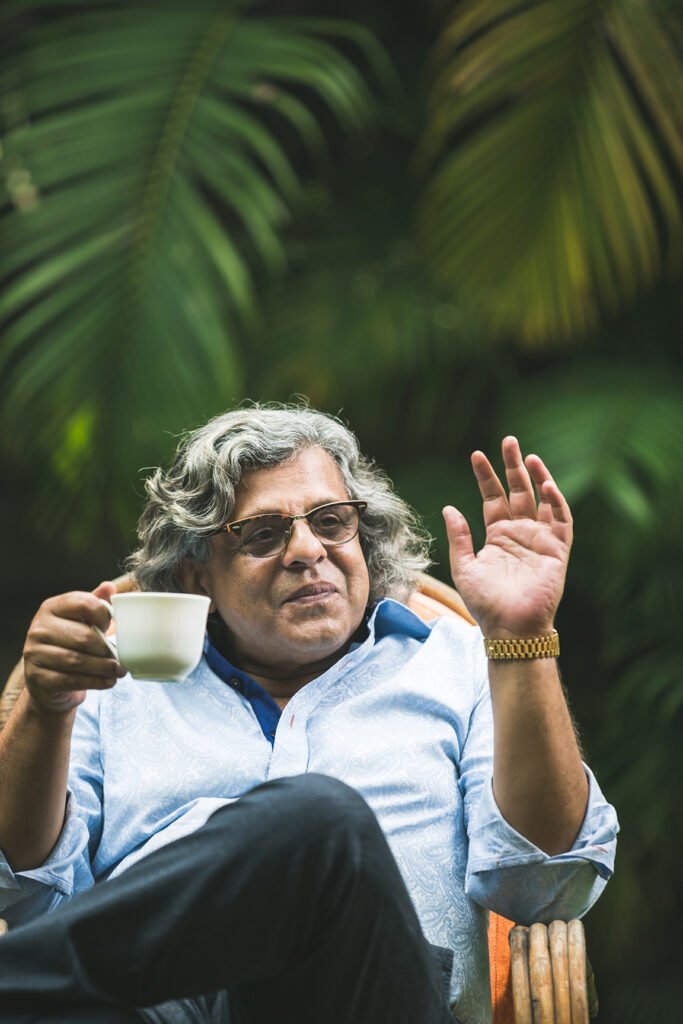
6.Indian Railways is both an operator and an OEM. What challenges does this create in modernising rolling stock production?
It hurts their factories in multiple ways. Already, these factories are being turned into contract workshops, which reflects an internal belief that design, engineering, and leadership capabilities within the organization are irretrievably lacking or not trusted This gradual decline mirrors what happened with Air India, which did not lose its prominence overnight, but through a slow erosion that seems to have begun here. What fine infrastructure and fine young people they have. Even if you want to sell these units, sell them as stars and to the Indian public, who have been invested in them for decades. Don’t dwarf them. If the operator controller of IR doesn’t approve the improvement in the factories for decades, then later believes they are not good enough for the modernisation needed, he sidelines them. Set them free, buy from them for ten years and after ten years, buy as an operator from anybody in India. Technology, supply chains, MSMEs, and exports will soar.
7. You have advocated for integrating systems integrators into rolling stock tenders. What specific changes do you recommend in the tendering process?
Simply make them eligible instead of explicitly making them ineligible. Across the world, architects and contractors exist for a reason. Btw, civil engineering prowess in the same organisation is wonderful. These specialist roles catapult a product sky-high. Here, the fear is: what if the contractor doesn’t deliver? It’s so negative, non-engineering, a mindset.
Secondly, IR has armies of procurement people. Instead of insisting on material being purchased by vendors, establish, SOPs to buy directly and build modern supply chains. Only technological OEMs can do that. There is immense talent among MSMEs.
Design engineering and management capability to build supply chains are the critical value-added parameters, that these tenders jump over, to avoid handling this responsibility directly. Being a buyer is more fun than being a developer. As private sector participation in rolling stock manufacturing grows, tenders demand unrealistic financial figures. Instead, assess credit ratings and provide support Letters of Credit. This so-called fear of financial capability will vanish. How can domestic firms show turnover when they have never been given opportunities? This structure favours few firms. Most procurement is based on elimination rather than selection. If you want to go to the moon and have never been, you can’t be prescribing how many times one has gone to the moon. The people who built the great Indian Railway had every quality except precedence. Put it back in the system.
8. How would the inclusion of know-how providers reduce costs and enhance IR’s competitiveness in the global railway industry?
See, 51% in RS is easy to achieve by just steel. The Hon’ble PM has given a great direction, we have to add our own jurisprudence to it. Bring a hundred other factors, subsystems and design engineering, also into 51% evaluation at the start. More importantly cross industry collaboration is crucial for innovation and expansion. All this adds up to a lot. Integrated cost optimisation is a process, that looks at content, design, purchasing with hand holding engineering and streamlining own operations. Some worry that weak bidders may enter the market. There are established processes to filter them out at one glance, in engineering terms, but it involves application of mind and reason.
9. There is a massive price gap between IR’s internal rolling stock costs and external procurement. Can you highlight how technology upgrades can bridge this gap?
From we (IR) won’t pay more than Rs. 2 CR per coach from our own factory, as passenger is a loss business; they went up to Rs. 8 CR from the same factory finally realising that modernisation was overdue. Only outside design engineering and leadership were added to ensure delivery. Even IR’s labor and equipment were deployed. Had the progress within IR been calibrated, the stitch in time would have saved nine. This cost would be some Rs. 5 CR number per coach, multiply that by thousands of coaches and you see it’s effect. That said, ₹8 crore per coach from vendors is not an unjustified cost—it reflects the heavy transfer of design, risk and operational realities, plus the cost centre and profit centre’s legitimate realities.
10. There is increasing interest in aluminium and articulated trains for efficiency and speed. How can Tooltech contribute to their development in India?
There is adequate reference of our precedence on record, but what I would like is, to create new innovation. We create buzz words out of technology. There are many issues such as social cost of carbon, speed, track wear, energy consumption, maintenance, workmanship, that need attention.
11. What lessons can India learn from European and Chinese rolling stock development models?
Both build their home industry, even if local companies buy imported know- how—which is fine; that’s how you grow up. They rarely give references to foreign companies but instead force them to cooperate locally. Those home references then build export eligibility. Nothing succeeds like success. When the adrenalin flows, confidence grows. ‘Can do’ attitude sets in, everything moves skywards.
12. What are the key technical and financial considerations in developing high-speed rail in India?
The development of high-speed rail in India involves multidisciplinary technical and financial considerations. I don’t know how it is being done here. I know in RS, a single-party order has been placed, then some core subcontract to a competent entity. That entity has either given or been asked to give the design work to a foreign design firm. What I do know, nobody does it this way. Know-how must be co-developed and reside here. Historically, in India industries like television manufacturing followed similar models, but where are they today? High-speed rail is more than just manufacturing to print of electromechanical components to reduce costs. It’s a deep ecosystem, where the widest participation should be sought.
13. Tooltech’s expertise in Whole Life Cost Analysis ensures long-term savings. Can you elaborate on its significance for Indian Railways?
We buy based on specifications and L1. It’s a curse. Some maintenance is factored in the outsourced products. But there is so much more. Cost below the iceberg can be scientifically measured. Why should any OEM invest in technology that’s costly upfront but saves nine stitches over time, if you don’t measure it, understand it? London underground gives 25% weightage to capital cost and 75% weightage to life-cycle or whole life costs, called total cost of ownership. We give 100% weightage to capex cost, wrongly thinking specifications take care of it all. Who will innovate? We define specs not the problem to be solved.
Yes, it’s a complex topic but closing our eyes to it, will not make the costs go away. Public procurement worldwide is moving towards it. The fact that an officer serves for three years while costs emerge decades later is a non-issue abroad; here, it is the biggest issue.
14. India currently does not export rolling stock at large scale. How can Tooltech help Indian Railways expand its footprints as an exporter rolling stock supplier?
Create a world-class product. Don’t block energies. Our own expertise in just one area, interior design for example has in principle approval since 2010, which is validated every three years by new teams, but has remained unattended. The same applies to new train technologies.
The key is to start somewhere. If India develops a strong rolling stock product, international buyers will line up, creating production and performance pressure. But who is willing to take on this challenge? The RITES team has demonstrated its ability to sell, engage them and see the results. There are so many segments in rolling stock that India can and should capture.
15. Do you think India has the potential to compete with global giants like CRRC, Alstom, and Siemens in rolling stock manufacturing? What needs to change?
You don’t have to challenge anyone. First enter the ring. Competition will come only after we reach say € 5 billion in annual exports; we perhaps do Euro 50 million!
16. With increasing metro, RRTS, and high-speed projects in India, how does Tooltech plan to utilise the potential of the growing urban mobility sector?
I have adequately answered the lack of interest in the ‘own product’ issue. Till this vision develops, we are actively engaged in advising on key operational areas such as:
a. Civil project planning, time and cost overrun prevention, forensic analysis, and people flow control. This is a science. The recent tragedy in people flow traffic planning has highlighted its importance. Overcrowding and large gatherings, especially during festivals, are a reality of Indian life. As is time and cost overruns. We try to control these.
b. We also provide expertise in rolling stock design, procurement, in-stage inspections, whole-life cost analysis, and operations and maintenance planning.
c. Our next goal is to work on the ‘O’ – operations, the passenger mobility experience beyond the ride and non-fare revenue.
The scope to reach global best practices in each area is high, particularly as infrastructure has now taken centre stage. Old ways will lead to avoidable waste. A modernism in system approach is needed.
17. If you had one key message for Indian Railways and policymakers regarding rolling stock modernization, what would it be?
Transform Indian Railways’ factories into global OEMs, with proprietary know-how, a distinct design identity and a brand. For metro systems, establish a unique city-specific design identity just as other global players have done and focus not only on hard assets and general consultants but on know-how of own people. People have talent, they have to brought up to speed.
18. What is your message to the readers of Metro Rail News?
Whether you are a buyer, or a seller, it’s just this. Be less servile, the country has been good to you; have bigger dreams for India and its children. Service exports from India here on will progress slowly. Now it’s just manufactured products which can build export, employment and what better place to start than in India’s oldest and biggest industry- Railways.
In 36 years of working with the best abroad, I have met better systems, less rigour and more respect for Entrepreneurs and ideas; But man-to-man seldom, cleverer people abroad. Combine your cleverness with courage and compassion.
You have great potential, don’t spare yourselves.ur next goal is to work on the ‘O’ – operations, the passenger mobility experience beyond the ride and non-fare revenue. The scope to reach global best practices in each area is high, particularly as infrastructure has now taken centre stage. Old ways will lead to avoidable waste. A modernism in system approach is needed.



